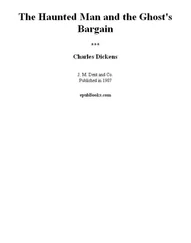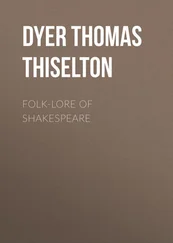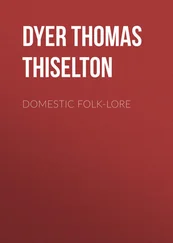Thomas Dyer - The Ghost World
Здесь есть возможность читать онлайн «Thomas Dyer - The Ghost World» — ознакомительный отрывок электронной книги совершенно бесплатно, а после прочтения отрывка купить полную версию. В некоторых случаях можно слушать аудио, скачать через торрент в формате fb2 и присутствует краткое содержание. Жанр: foreign_antique, foreign_prose, на английском языке. Описание произведения, (предисловие) а так же отзывы посетителей доступны на портале библиотеки ЛибКат.
- Название:The Ghost World
- Автор:
- Жанр:
- Год:неизвестен
- ISBN:нет данных
- Рейтинг книги:5 / 5. Голосов: 1
-
Избранное:Добавить в избранное
- Отзывы:
-
Ваша оценка:
- 100
- 1
- 2
- 3
- 4
- 5
The Ghost World: краткое содержание, описание и аннотация
Предлагаем к чтению аннотацию, описание, краткое содержание или предисловие (зависит от того, что написал сам автор книги «The Ghost World»). Если вы не нашли необходимую информацию о книге — напишите в комментариях, мы постараемся отыскать её.
The Ghost World — читать онлайн ознакомительный отрывок
Ниже представлен текст книги, разбитый по страницам. Система сохранения места последней прочитанной страницы, позволяет с удобством читать онлайн бесплатно книгу «The Ghost World», без необходимости каждый раз заново искать на чём Вы остановились. Поставьте закладку, и сможете в любой момент перейти на страницу, на которой закончили чтение.
Интервал:
Закладка:
Samlesbury Hall, Lancashire, has its ghosts; and it is said that ‘on certain clear still evenings a lady in white can be seen passing along the gallery and the corridors, and then from the hall into the grounds; then she meets a handsome knight who receives her on bended knees, and he then accompanies her along the walks. On arriving at a certain spot, most probably the lover’s grave, both the phantoms stand still, and, as they seem to utter lost wailings of despair, they embrace each other, and then melt away into the clear blue of the surrounding sky.’ The story goes that one of the daughters of Sir John Southworth, a former owner, formed an attachment with the heir of a neighbouring house; but when Sir John said ‘no daughter of his should ever be united to the son of a family which had deserted its ancestral faith,’ an elopement was arranged. The day and place were overheard by the lady’s brother, and, on the evening agreed upon, he rushed from his hiding-place and slew her lover. But soon afterwards her mind gave way, and she died a raving maniac. 84 84 Haunted Homes of England , 2nd S., pp. 222-225.
Mrs. Murray, a lady born and brought up in the borders, writes Mr. Henderson, 85 85 Folk-lore of Northern Counties , p. 267.
tells me of ‘a cauld lad,’ of whom she heard in her childhood during a visit to Gilsland, in Cumberland. He perished from cold, at the behest of some cruel uncle or stepdame, and ever after his ghost haunted the family, coming shivering to their bedsides before anyone was stricken by illness, his teeth audibly chattering; and if it were to be fatal, he laid his icy hand upon the part which would be the seat of the disease, saying:
Cauld, cauld, aye cauld!
An’ ye see he cauld for evermair.
St. Donart’s Castle, on the southern coast of Glamorganshire, has its favourite ghost, that of Lady Stradling, who is said to have been murdered by one of her family. ‘It appears,’ writes the late Mr. Wirt Sikes, 86 86 British Goblins , pp. 143, 144.
‘when any mishap is about to befall a member of the house of Stradling, the direct line, however, of which is extinct. She wears high-heeled shoes, and a long trailing gown of the finest silk.’ While she wanders, the castle hounds refuse to rest, but with their howling raise all the dogs in the neighbourhood. The Little Shelsey people long preserved a tradition that the court-house in that parish was haunted by the spirit of a Lady Lightfoot, who was said to have been imprisoned and murdered; 87 87 Gentleman’s Magazine , 1855, part ii. p. 58.
and Cumnor Hall has acquired a romantic interest from the poetic glamour flung over it by Mickle in his ballad of Cumnor Hall, and by Sir Walter Scott in his ‘Kenilworth.’ Both refer to it as the scene of Amy Robsart’s murder, and although the jury agreed to accept her death as accidental, the country folk would not forego their idea that it was the result of foul play. Ever since the fatal event it was asserted that ‘Madam Dudley’s ghost did use to walk in Cumnor Park, and that it walked so obstinately, that it took no less than nine parsons from Oxford to lay her.’ According to Mickle —
The village maids, with fearful glance,
Avoid the ancient moss-grown wall;
Nor ever lead the merry dance
Among the groves of Cumnor Hall.
About half a mile to the east of Maxton, a small rivulet runs across the old turnpike road, at a spot called Bow-brig-syke. Near this bridge is a triangular field, in which for nearly a century it was averred that the forms of two ladies, dressed in white, might be seen pacing up and down, walking over precisely the same spot of ground till morning light. But one day, while some workmen were repairing the road, they took up the large flagstones upon which foot-passengers crossed the burn, and found beneath them the skeletons of two women lying side by side. After this discovery the Bow-brig ladies, as they were called, were never again seen to walk in the three-corner field. The story goes that these two ladies were sisters to a former laird of Littledean, who is said to have killed them in a fit of passion, because they interfered to protect from ill-usage a young lady whom he had met at Bow-brig-syke. Some years later he met with his own death near the same fatal spot. 88 88 See Henderson’s Folk-lore of Northern Counties , pp. 324-325.
Mr. Sullivan, in his ‘Cumberland and Westmoreland,’ relates how, some years ago, a spectre appeared to a man who lived at Henhow Cottage, Martindale. Starting for his work at an early hour one morning, he had not gone two hundred yards from his house when his dog gave signs of alarm, and, on looking round, he saw a woman carrying a child in her arms. On being questioned as to what was troubling her, the ghost replied that she had been seduced, and that her seducer, to conceal his guilt and her frailty, had given her medicine, the effect of which was to kill both mother and child. Her doom was to wander for a hundred years, forty of which had expired. The occurrence is believed to have made a lasting impression on the old man, who, says Sullivan, ‘was until lately a shepherd on the fells. There can be no moral doubt that he both saw and spoke with the apparition; but what share his imagination had therein, or how it had been excited, are mysteries, and so they are likely to remain.’ But as Grose remarks, ghosts do not go about their business like living beings. In cases of murder, ‘a ghost, instead of going to the next justice of the peace and laying its information, or to the nearest relation of the person murdered, it appears to some poor labourer who knows none of the parties, draws the curtains of some decrepit nurse or alms-woman, or hovers about the place where his body is deposited.’ The same circuitous mode, he adds, ‘is pursued with respect to redressing injured orphans or widows, when it seems as if the shorter and more certain would be to go to the person guilty of the injustice, and haunt him continually till he be terrified into a restitution.’
From early days the phantoms of the murdered have occasionally appeared to the living, and made known the guilty person or persons who committed the deed. Thus Cicero relates how ‘two Arcadians came to Megara together; one lodged at a friend’s house, the other at an inn. During the night, the latter appeared to his fellow-traveller, imploring his help, as the innkeeper was plotting his death; the sleeper sprang up in alarm, but thinking the vision of no importance, he went to sleep again. A second time his companion appeared to him, to entreat that, though he had failed to help, he would at least avenge, for the innkeeper had killed him, and hidden his body in a dung-cart, wherefore he charged his fellow-traveller to be early next morning at the city gate before the cart passed out. The traveller went as bidden, and there found the cart; the body of the murdered man was in it, and the innkeeper was brought to justice.’ 89 89 Quoted in Tylor’s Primitive Culture , i. p. 444.
Of the many curious cases recorded of a murder being discovered through the ghost of the murdered person, may be quoted one told in Aubrey’s ‘Miscellanies.’ It appears that on Monday, April 14, 1690, William Barwick was walking with his wife close to Cawood Castle, when, from motives not divulged at the trial, he determined to murder her, and finding a pond conveniently at hand, threw her in. But on the following Tuesday, as his brother-in-law, Thomas Lofthouse, ‘about half an hour after twelve of the clock in the daytime, was watering quickwood, as he was going for the second pail, there appeared walking before him an apparition in the shape of a woman, “her visage being like his wife’s sister’s.” Soon after, she sat down over against the pond, on a green hill. He walked by her as he went to the pond, and, on his return, he observed that she was dangling “something like a white bag” on her lap, evidently suggestive of her unborn baby that was slain with her. The circumstance made such an impression on him, that he immediately suspected Barwick, especially as he had made false statements as to the whereabouts of his wife, and obtained a warrant for his arrest. The culprit when arrested confessed his crime, and the body of the murdered woman being recovered, was found dressed in clothing similar, apparently, to that worn by the apparition. Ultimately Barwick was hanged for his crime.’ 90 90 See Ingram’s Haunted Homes , 1884, pp. 33-36.
Интервал:
Закладка:
Похожие книги на «The Ghost World»
Представляем Вашему вниманию похожие книги на «The Ghost World» списком для выбора. Мы отобрали схожую по названию и смыслу литературу в надежде предоставить читателям больше вариантов отыскать новые, интересные, ещё непрочитанные произведения.
Обсуждение, отзывы о книге «The Ghost World» и просто собственные мнения читателей. Оставьте ваши комментарии, напишите, что Вы думаете о произведении, его смысле или главных героях. Укажите что конкретно понравилось, а что нет, и почему Вы так считаете.












